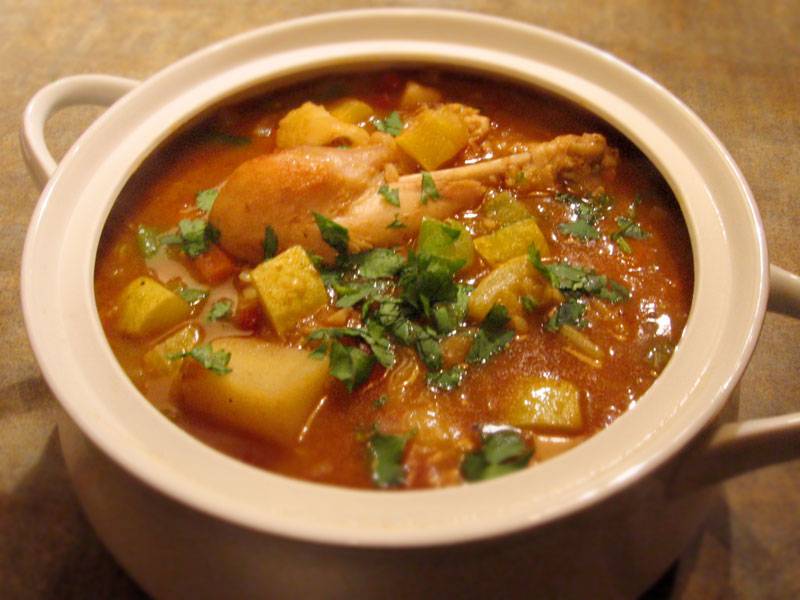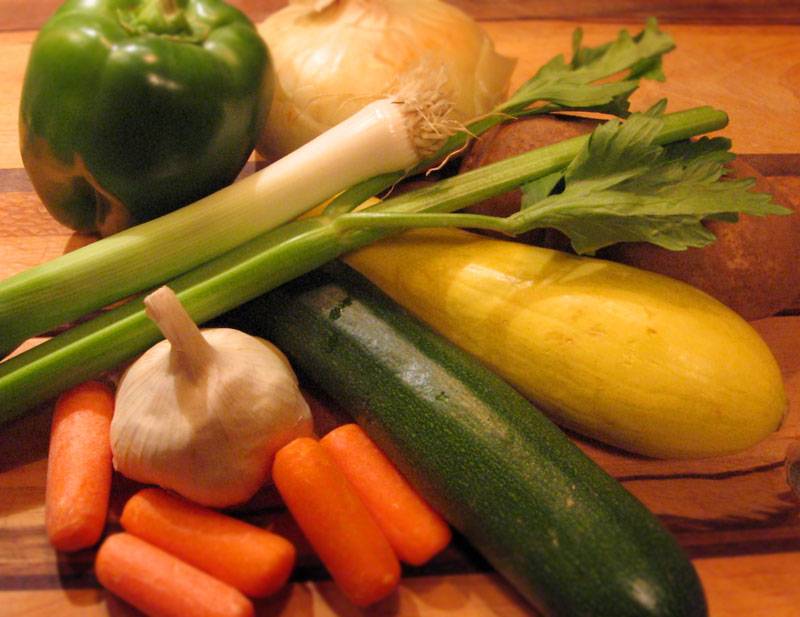 Whenever my wife Bonnie and I take an excursion to big cities such as Chicago or St. Louis, we look for dining opportunities not available in our little towns. Since there are no Ethiopian restaurants in Champaign-Urbana, we try to find an excuse to stop at Ethiopian Diamond in Chicago or Meskerem in St. Louis to satisfy our taste buds for Northern African flavors. Ethiopian cuisine has heady, intense flavors and unusual spice combinations. The sloppy portions are usually served on a spongy bread called injera. Traditionally, the food is shared by everyone at the table and eaten the way food was meant to be eaten — without utensils. The tactile sensation of feeling the texture and temperature of what you are about to put in your mouth is like foreplay. Everything just seems to tastes better.
Whenever my wife Bonnie and I take an excursion to big cities such as Chicago or St. Louis, we look for dining opportunities not available in our little towns. Since there are no Ethiopian restaurants in Champaign-Urbana, we try to find an excuse to stop at Ethiopian Diamond in Chicago or Meskerem in St. Louis to satisfy our taste buds for Northern African flavors. Ethiopian cuisine has heady, intense flavors and unusual spice combinations. The sloppy portions are usually served on a spongy bread called injera. Traditionally, the food is shared by everyone at the table and eaten the way food was meant to be eaten — without utensils. The tactile sensation of feeling the texture and temperature of what you are about to put in your mouth is like foreplay. Everything just seems to tastes better.
When we hunger for that Ethiopian aroma, but don’t want to drive three hours for dinner, we try to duplicate those magical flavors at home. The secret to Ethiopian cuisine turned out to be a spice mix called berbere. Unable to find a local merchant who carries this spice mix, we learned to make it ourselves from a recipe in one of our favorite cookbooks, Sundays at Moosewood Restaurant. The mix takes about 15 minutes to make and is well worth the extra effort. We like to make a big batch and store it for future use.
Once the berbere spice mix is made, you can pretty much add it to any dish and your taste buds will be instantly transported to North Africa. Since the weather is getting colder, I decided to make a chicken stew with a brand new batch of berbere. Schnucks now carries – fresh, not frozen – free-range organic chicken. We used chicken legs because drumsticks are the most fun to eat (about $3.30 a pound), but you can use a whole chicken if you wish. Or just skip the chicken if you’re vegetarian.
The secret to making any stew heavenly is lots and lots of garlic. “Too much garlic” is just not in my vocabulary. I used a whole bulb (that’s about a dozen cloves), but don’t let me stop you from using two or more bulbs. Stews, by definition, are supposed to be rich and thick. Of the many ways to thicken a stew, my favorite is over-cooked potatoes. Yes, you read that right: if you over-cook potatoes, the stew becomes a luscious, gravy-like consistency. I start the stew with small pieces of diced potatoes, so they cook quicker and can melt away while the stew is simmering. When the stew is almost done, I add larger cubes of potatoes, so we can still enjoy chunks of soft, velvety potato in our stew.
One other tip: Since this is chicken stew, I needed to add chicken bullion to flavor the broth. Unfortunately, not all chicken bullion is the same. If you start reading the ingredients, some brands of chicken bullion contain a very long list of strange ingredients including the dreaded monosodium glutamate. Whenever possible, I try to use chicken base instead of bullion cubes because it dissolves easier. Fortunately, we found a great brand of chicken base at our local Jerry’s IGA from Das Dutchman Essenhaus. Not only does this chicken base contain no MSG, it also has the shortest ingredient list I’ve seen in a long time.
As for that spongy bread, the injera recipes I looked up were too challenging, so I made do with the next best thing — fresh FGF tandoori naan (available from Meijer). Not authentic, but still very tasty. If you can’t get out to Meijer, Annapoorna stocks frozen naan in their freezer.
 Ingredients for the stew:
Ingredients for the stew:
Berbere Spice Mix
(preparation time: 15 min)
A:
- * 1½ tbsp cumin seeds
- * 10 whole cloves
- * 2 tbsp cardamon seeds
- * 1 teasp whole black peppercorns
- * ½ teasp allspice
- * 2 teasp fenugreek seeds
- * 1 teasp coriander seeds
B:
- 1 tbsp dried red pepper flakes
- ½ teasp tumeric
- 5 tbsp sweet Hungarian paprika
- ¼ teasp ground cinnamon
Instructions
- Toast spice mix A in a frying pan for about 2 minutes, stirring constantly.
- Let the spice mix cool.
- Mix spice mix A and B in a food processor and grind until the texture is like salt.
- Store refrigerated in a well-sealed jar.
Berbere Chicken Stew
(preparation time: 1 hour; serves 6)
- 6 chicken legs
- 4 tbsp canola oil
- 1½ cup onion, chopped
- 1 teasp fresh ginger, minced
- 1 leek, minced
- 1 bulb garlic, minced
- 5 cups water (approximate)
- 2 tbsp chicken base
- 2 potatoes, diced
- 1½ cup carrots, chopped
- 1 celery heart, chopped
- 2 potatoes, cut into 1-inch cubes
- 1 can diced tomatoes (14 oz)
- 1½ cup celery, diced
- 1 zucchini, diced
- 1 yellow squash, diced
- 1 green pepper, diced
- 3 tbsp berbere spice mix
- 3 tbsp soy sauce
- salt to taste
- chopped cilantro to garnish
Instructions
- Brown the chicken legs in a non-stick sauce pan, set aside.
- Start the stew in a big soup pot by sautéing the onion, ginger, leek and garlic.
- Add half the water, chicken base and diced potatoes, boil for 15 minutes.
- Add the vegetables in the following order, bringing the stew to boil after adding each item: carrots, celery heart, tomatoes.
- Add the remaining water as needed until the desired consistency of the stew is achieved, simmer for 15 minutes.
- Add the following items: chicken, potato cubes, celery, zucchini, squash, green pepper, bring stew to a boil.
- Add the berbere spice mix, soy sauce and salt; simmer for another 15 minutes.
- Serve in a large bowl, garnish with cilantro.
- Optional: serve with injera or tandoori naan.








